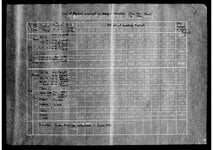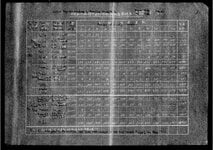Shortround6
Lieutenant General
This is very true and it is true for most (all?) destroyers before the late 1930s.They would have needed to remove some main armament turrets, or something like that, on many ships in order to make room for more AA and radars
Some of the Japanese DDs from WW I and the early 20s had a pair of 6.5mm machine guns, replaced by a pair of 7.7mm guns. Even swapping for or adding a twin 13.2mm Hotchkiss mount is starting to push things
What is a little weird is that the Japanese had 100-200 British pdr Pom-Pom guns in the 1920s. They were not happy with them and they tended to get replaced by the 25mm Hotchkiss.
The British put time/effort into the WW I 2pdr to get the guns/ammo used in WW II so it is hard to say.
Most (all?) Navies biased their destroyers to torpedo and surface action in the 1920s/30s.
British and Americans had large numbers of WW I destroyers they could down grade to escorts (not enough but a lot more than anybody else had).
But Japan had considerations that other countries (except for England) did not have. Their trade routes were much longer than WW I destroyers could really deal with.
The planned attack on the DEI really shows the problem, It is over 1300 miles from the North of Borneo to just north of Taiwan, let alone getting to Japan.
Much of the raw materials that Japan wanted to seize were hundreds of miles further than their 'normal' trade routes.
Several things happened the first year of the Pacific war to help lull the Japanese into a false sense of security. The British had withdrawn their subs from Singapore. Holland had been over run and the DEI was trying to hang on pretty much by it self. Parts/supplies for the Dutch subs in the DEI were not as plentiful as they might have been. The rapid collapse of the Philippines took out the US Navy sub base, moving operations to either Australia or Pearl Harbor. The US torpedoes sucked so the US subs were not very effective (and for a few other reasons) so the expected losses due to subs in 1942 were within the expected losses the Japanese high command had anticipated. Perhaps they goofed here, They could absorb losses during a short war. But the losses are cumulative and they could not replace the early losses and as the war went on and the loss of transport only got steadily worse. even 20-30% fewer losses in 1942 might have been worthwhile.
On the flip side, while the US was not inflicted a lot of losses on Japanese merchant ships, the Japanese were not sinking very many US subs. The US sub commanders, unlike some of the admirals had a good idea where the problems were were even if they didn't know how to fix them. The US was not getting the results they wanted but they were not loosing very subs either. The US could afford to wait to see if things changed (fix the torpedoes). Had the Japanese been sinking more subs and the US subs been getting even few kills perhaps the US might have changed/modified their strategy?
But escorting merchant ships was not in the mindset of the Japanese navy. In fact even later in the war one account claims that many of the escort commanders had graduated from the merchant fleet academy and not from actual naval academy. Granted many British and US officers were reserve officers and while there were class distinctions it may not have been as bad as in Japan? There were no AS training schools.
The Japanese didn't really need more Emily's.
What they needed were planes closer to the Catalina or perhaps a twin closer to the Martin Mariner.
Something they could built two of instead of one Emily.




